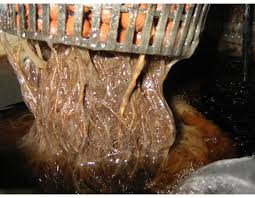How to Fight Root Rot in Hydroponics ?
What Causes Root Rot ?
The main micro-organisms responsible root rot are Pythium spp. These fungi are widely spread in both indoor and outdoor spaces, whether you are growing in soil or hydroponically.
In hydroponics, pipes, tubing, tanks, plumbing components can be contaminated even when the systems are treated with disinfectants. Nutrient solution circulation is one of the primary ways Pythium spp. are dispersed in hydroponic crops.
The Pythium spores become more resistant to extreme temperatures, humidity and ionic environments. Oospores can survive for several months in fragments of dead roots, which may then be introduced and dispersed into gardens by infected transplants or reused media, polluted water, contaminated equipment and workers.
The Symptoms
Besides the roots, crops affected show stunted shoots, wilted leaves and a reduction in flowering and fruiting. Plants appear to be healthy, even though growth is stunted and roots are decaying. In most scenarios, stunted growth may go unnoticed for a considerable amount of time because all plants in are similarly affected.
The Solution
The factors that make plants vulnerable to root rot include a low concentration of DO (dissolved oxygen) in the nutrient solution (less than 6ppm), lack of oxygen in the soil, constant warm temperatures, high humidity and dark environments.
Using Sujeev BM to fight Pythium spp is one of the most effective ways to both prevent and treat root rot.
The key is to apply Sujeev BM when a plant is a seedling or at first transplant and to keep administering it to build up the root zone’s microflora throughout the plant’s lifetime.

